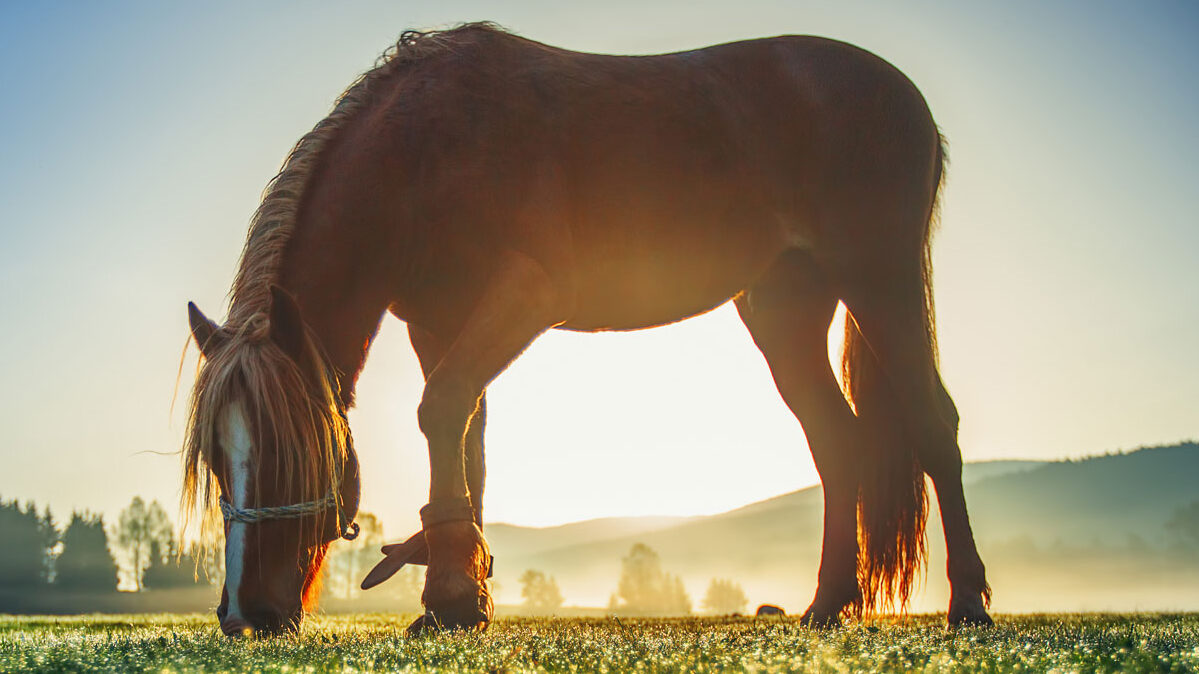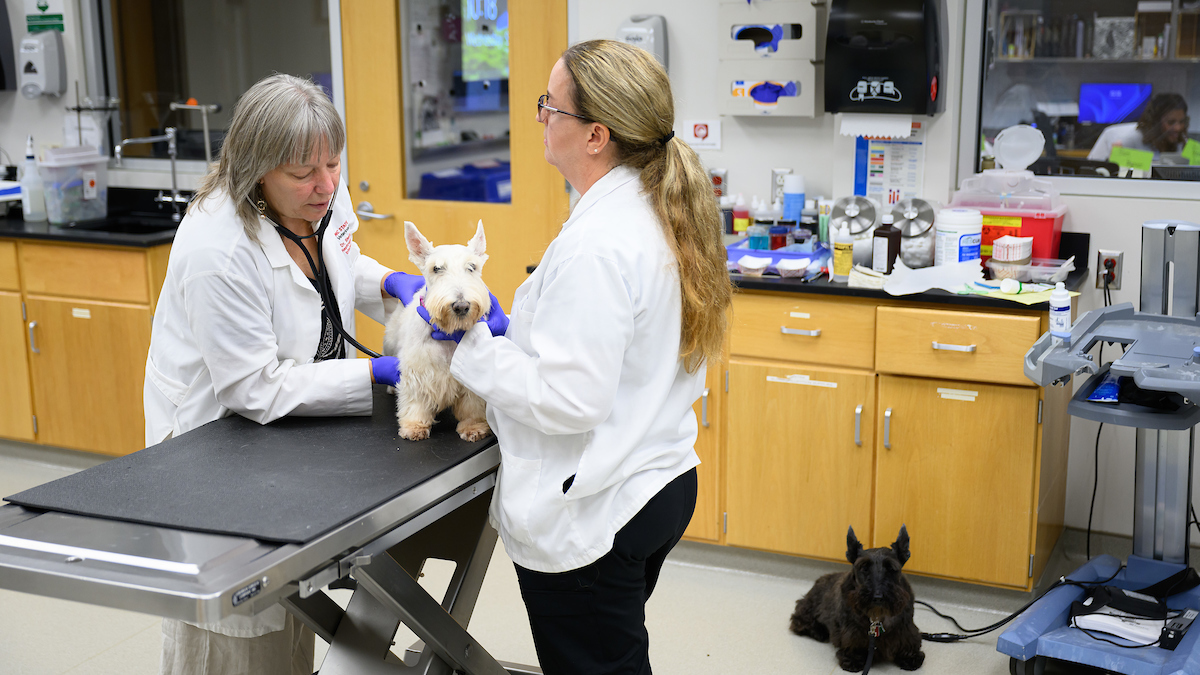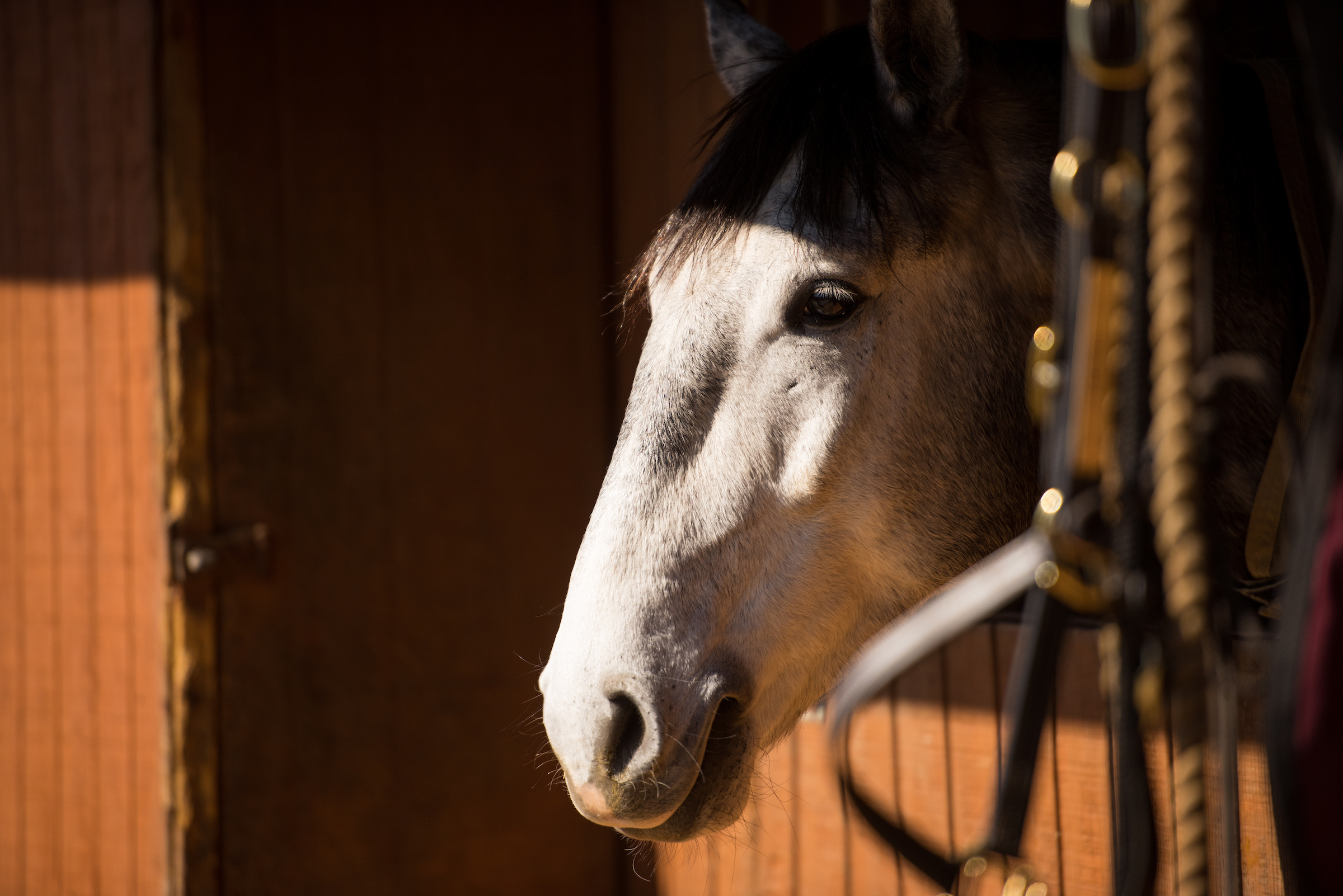Equine strangles is a highly infectious disease that, though rarely fatal, can quickly spread through a barn and affect many horses.
“It’s usually probably three to four weeks total for a horse to clear the infection, and during that time, they can give it to a whole lot of other horses,” says Dr. Kate Hepworth, an assistant professor of equine medicine at the NC State College of Veterinary Medicine. “It can be a very prolonged disease course that can stop people from traveling, going to horse shows, and doing many of the things that people enjoy doing with their horses.”
The key to reducing spread, Hepworth says, is being proactive by catching the early signs that a horse is sick, involving your veterinarian and observing good biosecurity practices.
Hepworth discussed the basics of equine strangles.
What is equine strangles, and what causes it?
Strangles is caused by Streptococcus equi bacteria. It’s essentially the horse equivalent of strep throat. It causes really big abscesses in the lymph nodes. It’s generally not fatal, but horses may feel sick for a few days. Some horses will have a fever for a few days and may not want to eat. Often, under their jaws, they can have abscesses in lymph nodes that rupture internally into their guttural pouches. Those lymph nodes can get big enough that they can actually compress the airway. That’s where the name “strangles” comes from. Most people now know enough about it that they get a veterinarian involved before it reaches that point.
Strangles becomes a problem in barns or herds of horses because it’s very, very contagious. Also, horses can become persistent carriers, so they can spread the disease for a long time after they no longer look sick. It can be aerosolized, and is also spread by nasal discharge and nose-to-nose contact. It’s also spread really easily if you or I were to pet one horse and then go to the next horse and pet them. If someone was cleaning a stall and then went to the next stall with that same equipment, it can be spread that way. So it’s just very easy to spread.
Strangles is a frustrating disease because it can spread through a barn, and if biosecurity protocols aren’t observed appropriately, or good quarantine facilities aren’t available, it can last for months. What happens is a couple of horses will get it, and just as they’re starting to get better, another horse gets it, and so on. It then can continue to sequentially affect a few horses at a time and run through a barn, making for an arduous and exhausting experience for everyone involved.
How can an owner prevent a horse from getting this?
You can practice basic biosecurity. If you travel, don’t share water buckets. Don’t allow your horse to have nose-to-nose contact with other horses. Try not to touch other horses as best as you can. If you’re bringing a horse onto a new property, especially if they have an unknown history, ideally quarantine them for three weeks. If there is a sick horse that your horse is exposed to, make sure that you’re performing appropriate biosecurity and wearing gloves when handling sick horses so that you don’t spread the disease to healthy horses.
What are the symptoms of strangles that owners should be on the lookout for?
Signs that your horse may have strangles include fever or a thick nasal discharge — it’s usually yellowish green. Sometimes, they may just be dull and not interested in eating. They may have big swellings under their jaw, which are the lymph node abscesses.
It is commonly seen after a new horse is introduced to the herd. We see it frequently in horses coming through sale barns or auctions, in horses that go to shows, or in young horses. A horse that’s in a pasture by itself with no contact with other horses and suddenly develops a fever is very unlikely to have strangles. A sick horse that was just acquired from a sale barn or sick horses from a herd where a new horse was recently introduced, there is a high likelihood of those horses having strangles.
What should an owner do if they suspect their horse has strangles?
The first step is to call your veterinarian. The next step is to isolate that horse from other horses until test results are available. That means having it in another stall at least 15 or 20 feet away — ideally in a separate barn. There should be separate pitchforks and separate water buckets. If personnel are going from stall to stall, they should wear new exam gloves for each horse or wash their hands really well in between and go to the sick horses last.
How do you treat a horse for strangles?
Treatment depends on the horse and its symptoms. Most horses can clear this infection by themselves. It’s actually better for them to be allowed to do that because then they will develop a long-lasting immunity. About 75% of horses will be immune for five years after they clear an infection.
Sometimes, if the symptoms are really severe, horses may need to get antibiotics or other treatments. It is important that a veterinarian make the decision regarding whether or not to treat an individual horse, since the antibiotic treatment can prolong the disease course, reduce the duration of immunity and make them more prone to reinfection after an infection. As long as the horse is relatively stable and just a little bit dumpy for a few days, it’s actually better and recommended to just let it run its course.
- Categories:



